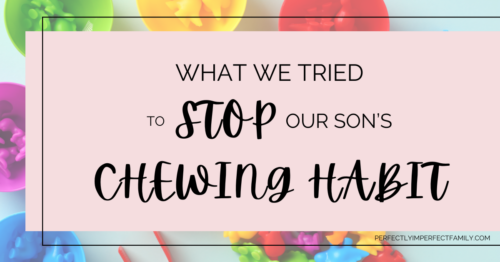
Warning Signs of Tactile Defensiveness
My son has been diagnosed with tactile defensiveness. Many of you may be wondering what tactile defensiveness is and what that means for someone with it.
Tactile defensiveness is a term used to describe hypersensitivity to touch. Individuals who experience tactile defensiveness are more bothered by the feel of things that touch their skin. Sensitivity may occur with food textures, clothing or fabric textures, self-care tasks, and receiving a hug or kiss. Or, it could be with specific items like paper, pencil, or messy play. Individuals who are sensitive to touch may respond by avoiding sensations or having a more significant reaction than would be expected or seen in others.
Looking back on my son’s childhood up until his diagnosis, there were a lot of warning signs of tactile defensiveness.
My son was my first child. When we brought him home from the hospital, we quickly noticed that he would cry every single time that we changed his diaper. With him being my first, I didn’t think anything of it. I figured that is how babies were. My mom lived close by and came over quite a bit the first week we were home from the hospital. She kept saying that he shouldn’t be crying when his diaper was changed. So we started trying many things to make him comfortable when we changed him. We tried different diapers, but that didn’t work. We tried different wipes, and that helped a little bit. We settled on a very soft wipe. He didn’t stop crying when we changed him until my mom bought us a wipe warmer. Luckily, after a couple of months, this finally got him to stop crying. It wasn’t until our diagnosis that we didn’t fully understand why he was crying when we changed him. He didn’t like the feel of the cold wipe on his bum.
Another strange thing that happened was at bath time. He loved being in the bath, but he would start crying as soon as we would get him out. It was every single time. We thought it might be because he didn’t want to get out of the bath. That wasn’t it, though. It was a different kind of cry. He would also cry hard when I rubbed lotion on him after his bath. My mom once again mentioned that he shouldn’t cry when I put lotion on him. We couldn’t figure out why he was doing that. Let’s say that I dreaded bath time. I would go as long as I could without bathing him because it was an awful experience. Once again, we didn’t understand why he was crying at bath time until we got our diagnosis of tactile defensiveness. He didn’t like the feel of the cold when he got out of the bath. He hated the feeling of me rubbing lotion all over his body.
Those were the two significant early signs of tactile defensiveness.
Another sign that I remember is that he hated baby food. It didn’t matter what it was he didn’t like it. I could get him to eat some of the fruit because it was sweet, but he didn’t enjoy baby food. Once he started eating solid foods, he only ate solid things, like chicken nuggets. He wouldn’t eat anything slimy or gooey. We still have a problem with this, which is our most challenging battle.
Looking back, another sign I can remember is that he wouldn’t touch certain things with his fingers or hands. He would never pick things up and put them in his mouth. Do you know how some babies find things on the ground and put them in their mouths? He never did this. I am unsure if it was because he was just a good baby or because he never wanted anything in his mouth. He never had his toys in his mouth or balls or anything like that.
These are the things that I can remember that were definite signs of tactile defensiveness after looking back on them. Once we got our diagnosis of tactile defensiveness, everything up to that point made so much sense.




